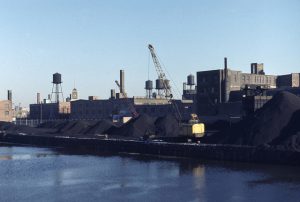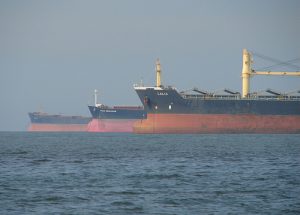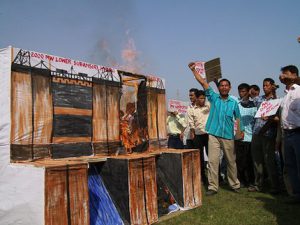In late August China’s National Development and Reform Commission announced a pilot project that aims to reduce coal consumption in the heavily populated urban areas of China’s east and southeast coasts.
With a benchmark of a two million kilowatt reduction in power use, and a strategy of reducing coal consumption by eliminating excess capacity and shuttering inefficient plants in the steel, aluminum, concrete, glass, and power industries, the proposed program’s goals are twofold. First, to reduce dangerously high levels of airborne pollutants; second, to reduce energy consumption in the manufacturing sector by 3.84% per unit of GDP per year.
China is planning to reduce the consumption of thermal coal. Primarily used to generate its electricity, China is the world’s largest consumer and importer of thermal coal. The Development and Reform Commission’s actions came just as the international banking community predicted a chilly future for coal exports.
In July, investment bank Goldman Sachs issued a report entitled ‘The Window for Thermal Coal Investment is Closing‘ that stated, “The prospect of weaker demand growth (we believe seaborne demand could peak in 2020) and seaborne prices near marginal production costs suggest that most thermal coal growth projects will struggle to earn a positive return for their owners…”
The report further chilled an already cooling export market for thermal coal, which was further depressed by a Citi study in September entitled, ‘The Unimaginable: Peak Coal in China’.
In its report Citi cited four factors — reduction of air pollution, a structured decrease in the national growth rate, robust growth of renewables, nuclear and availability of natural gas, and efficiency improvements in coal power plants — as predictors of a rapid decrease in coal consumption.
That Chinese coal consumption will expand again seems unlikely. Gang He, a graduate of Peking University, who formerly led the China research of Stanford University’s Program on Energy and Sustainable Development said, “Basically China is restricting coal use not just for energy security, but for environmental protection and climate change. Those are all real problems for China. China needs to peak its carbon emissions and energy consumption as soon as possible.”
For the US this could have major implications. Its own coal market has diminished in the face of increasingly stringent environmental regulations and competition from cleaner and cheaper natural gas. Major coal companies have responded to the lacklustre domestic market by aggressively seeking export markets where demand is high and regulation often minimal, primarily in Asia.
Although US coal fields lie at much greater distance from the markets than those of such major exporters as Australia and Indonesia, US companies could have competed successfully in the world coal market of two or three years ago. Prices were high, for a brief moment skyrocketing to a reported all time high of US $142 a ton in 2011, and then retreating to a still high rate of US $120 to $130 a ton for nearly a year. American coal reserves were large, while royalties paid for mining on public lands were low, effectively subsidising the coal companies. The low cost of the coal more than made up for higher shipping costs. Mining companies had the infrastructure to mine vast quantities of coal, and a network of rail lines was in place to transport the coal to the coast. The only thing lacking was big coastal export terminals.
Ignoring the cities, towns, Native American tribes, and the residents along the route, the coal companies set out to convert the American Northwest into the largest coal export site in the US with the construction of six major coal terminals. The coal companies waged a multi-million dollar media campaign that equated job growth in a recessed economy with exports.
As international coal prices fell, the plans for four of the export terminals fell by the wayside. Despite the increasingly cloudy future for American coal exports, coal companies such as Peabody, Cloud Peak, Arch and Ambre continue to plow forward with the permit process for the two largest ports proposed for the Northwest ‘s Washington States. Not only would they be the biggest coal ports in the entire US with a combined potential to ship over 90 million tons a year, ironically they would make Washington, known as the Evergreen State, one of the world’s largest sources of atmospheric pollution.
Faced with strong local opposition from an environmentally concerned populace, granting a permit to operate a coal terminal promises to be a lengthy process. But the coal companies may have found a way to expedite their permits, at least at one of the two sites. At the Cherry Point site near Bellingham, Washington, the permit process is jointly administered by three agencies the Army Corp of Engineers, the Washington State Department of Ecology, and the local government of Whatcom County. As the site where the biggest of the terminals will be located, Whatcom plays an outsize role in approving or rejecting the permit.
But the county commissioners are up for re-election in November. With door-to-door canvassing, signs, promotional materials and an advertising campaign managed by professionals — investment of resources far beyond those found in typical county elections — the coal companies may be able gain the support needed for permit approval.
The election will show whether the coal companies have found a way around the permit process, but a permit to operate is no guarantee of success. However, finding a way around the rapidly changing world coal market — and China’s potential coal peak — may be a more difficult task.







